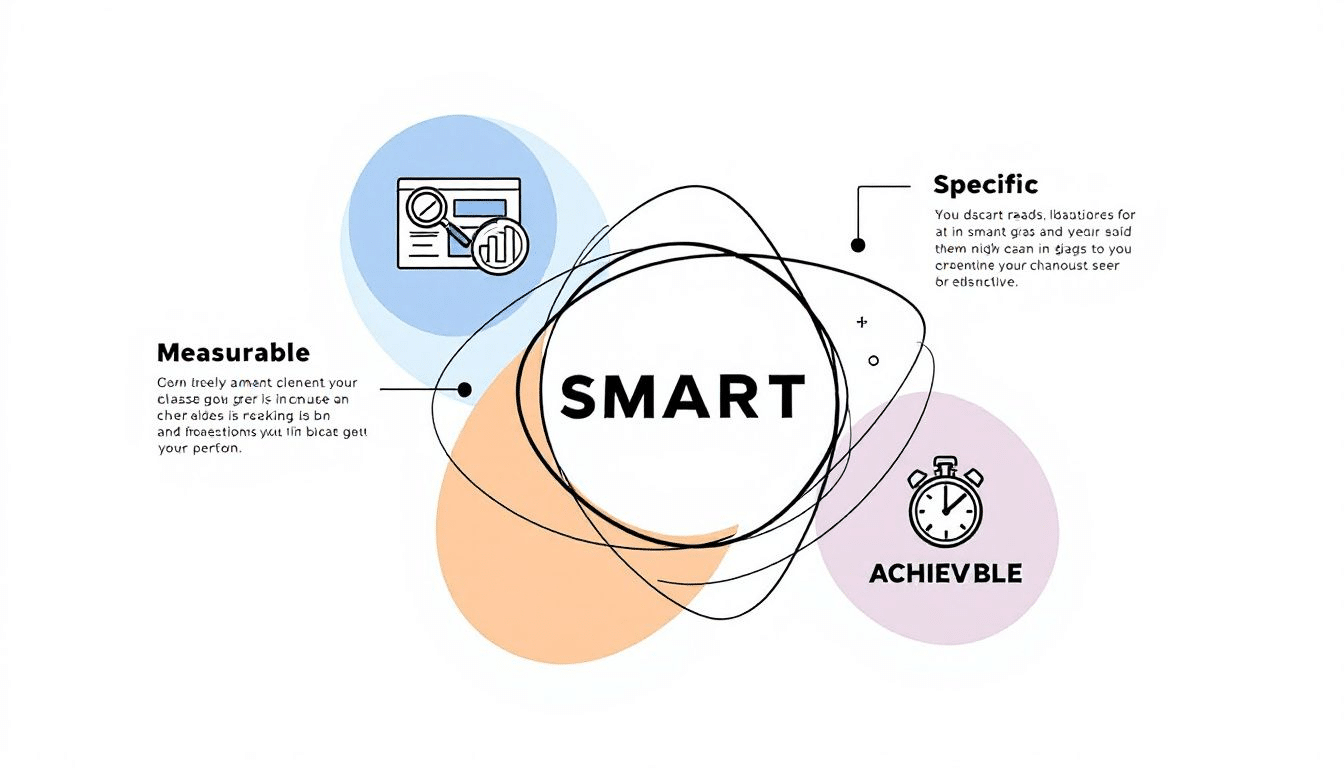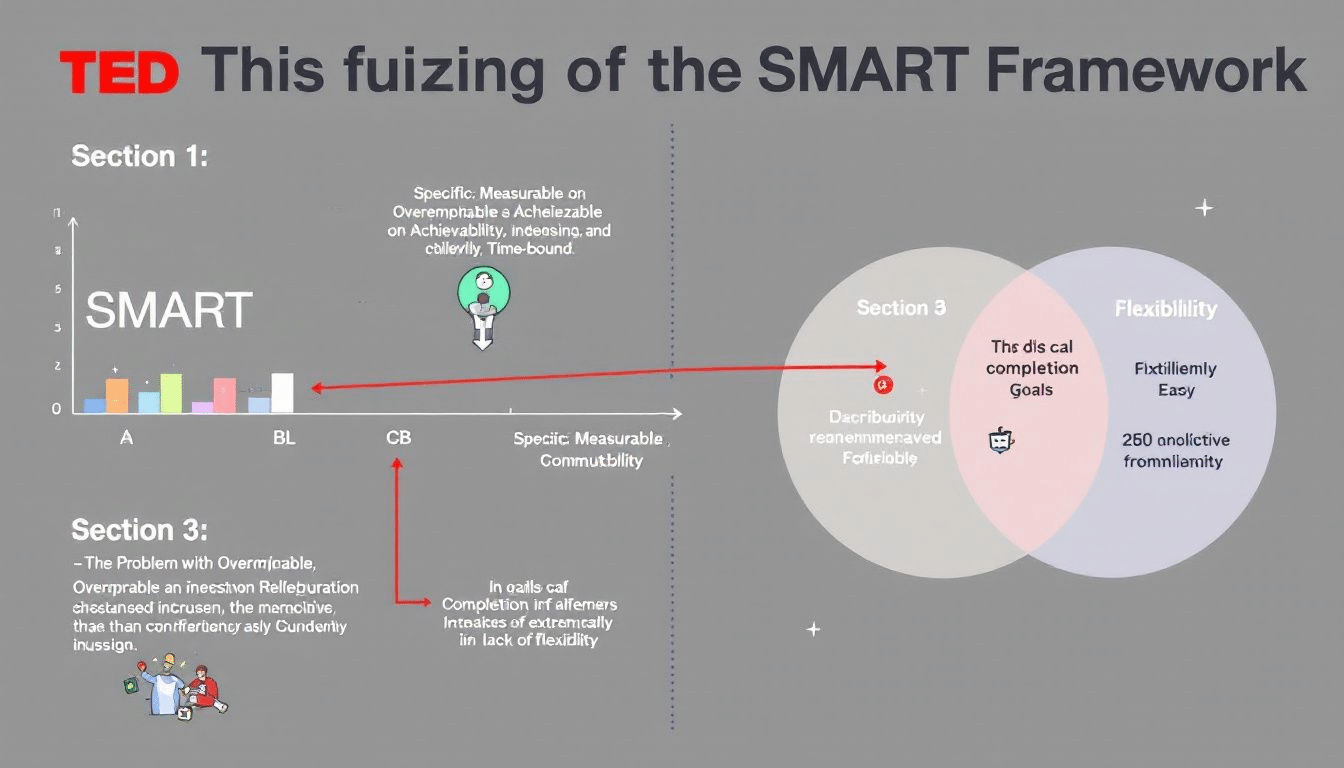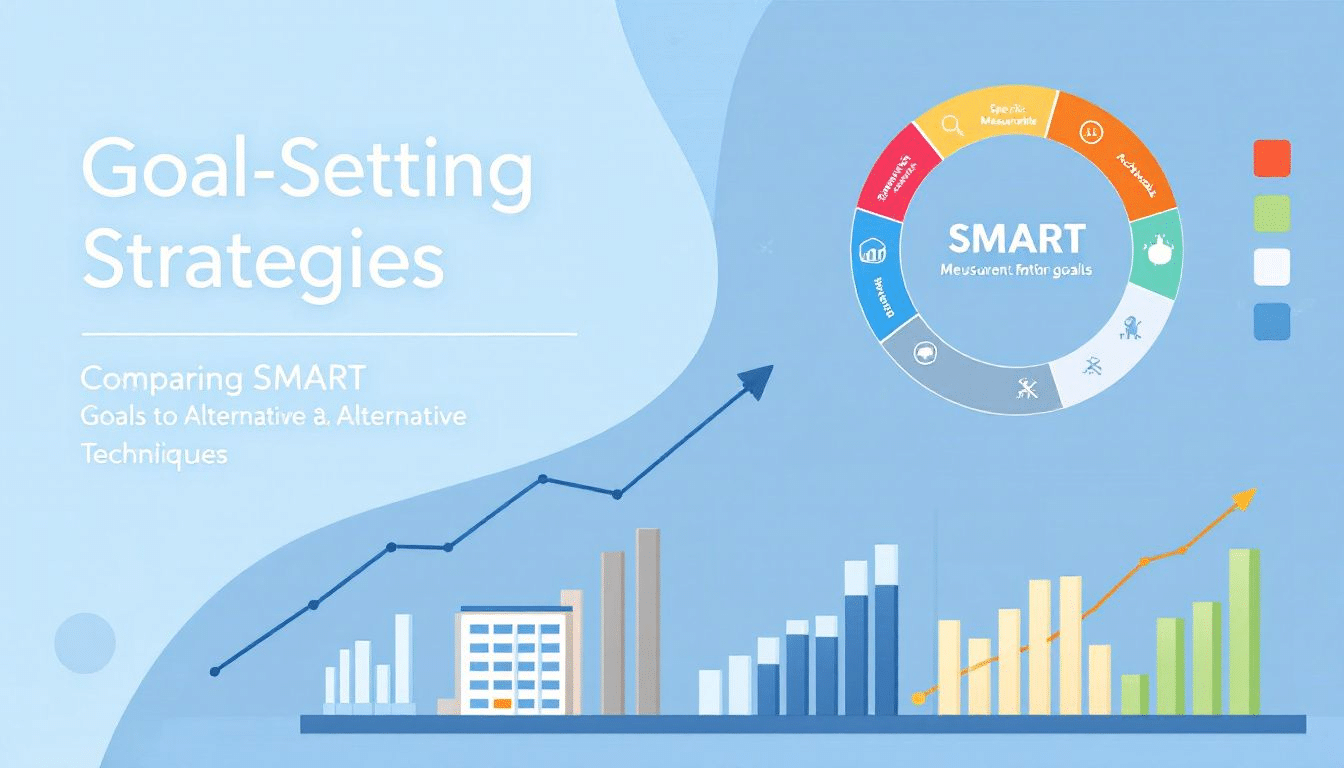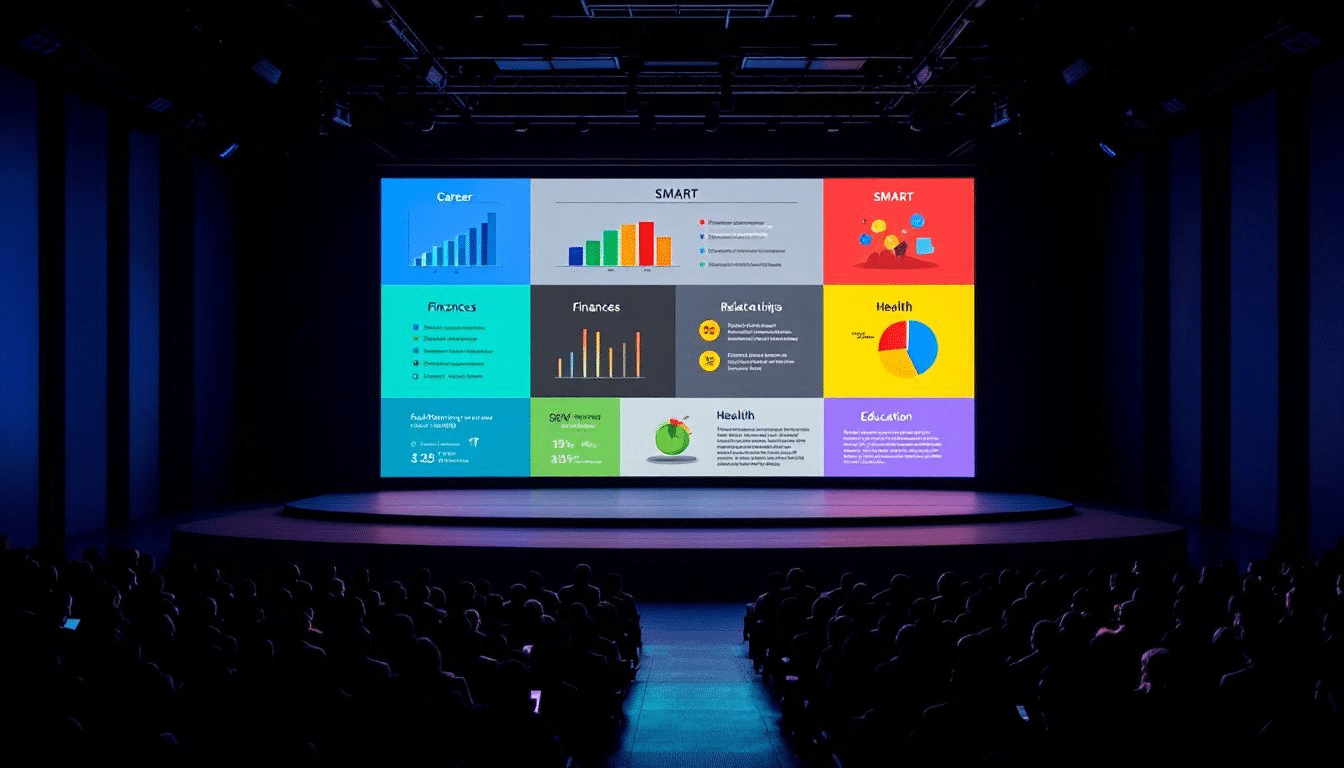Are SMART goals effective? This article will explore whether the SMART framework truly helps in achieving goals. We’ll cover what SMART goals are, their pros and cons, and alternative goal-setting methods.
Key Takeaways
SMART goals provide a structured framework that enhances clarity, focus, and motivation for achieving objectives.
While effective, SMART goals can be rigid and may limit creativity, hence it’s essential to consider alternative goal-setting techniques like HARD and PACT.
Regular reflection, feedback incorporation, and strategy adjustments are crucial for enhancing your goal-setting process and ensuring achievement.
Understanding SMART Goals

Setting goals is a pivotal part of achieving success. How you set those goals can be the difference between success and failure, according to goal setting theory.
SMART goals provide a structured and clear framework that has been embraced by students, teachers, entrepreneurs, athletes, and nearly everyone aiming to set goals and achieve great things through smart goal setting and the smart acronym.
Definition of SMART Goals
SMART stands for Specific, Measurable, Achievable, Relevant, and Time-bound. This acronym ensures that goals are clear and reachable. The concept was first introduced by George T. Doran in 1981 and is often attributed to Peter Drucker.
Defining goals with specificity, measuring progress, ensuring achievability, aligning them with relevant values, and setting deadlines all contribute to the clarity, focus, and motivation provided by SMART goals. This approach transforms general goals into actionable plans.
The Purpose of SMART Criteria
The ease of teaching, remembering, and applying the SMART framework makes it effective across various disciplines. Each criterion—Specific, Measurable, Achievable, Relevant, and Time-bound—enhances learning and performance. Specificity helps in better management and problem-solving, while relevance ensures alignment with personal values and other objectives.
The time-bound aspect creates deadlines that prioritize long-term objectives.
Benefits of Using SMART Goals

SMART goals go beyond setting targets; they create a roadmap to success. Clarifying ideas, focusing efforts, and efficiently using time and resources increase the likelihood of achieving objectives. This structured approach promotes learning and performance, especially in educational settings.
The time-bound nature of SMART goals keeps you accountable and focused on achieving your long-term goals.
Clarity and Focus
SMART goals offer clear guidance, promoting both clarity and focus. For instance, specific educational goals, such as completing coursework by deadlines, enhance focus and performance. In the workplace, skill development can lead to career advancement.
Setting clear, SMART fitness goals can improve health and well-being significantly. Overall, SMART goals establish a framework that guides clearer strategies and focused efforts towards achievement.
Measurable Progress
A key benefit of SMART goals is their measurability. Measurable goals are crucial for tracking progress and maintaining motivation during the goal-setting process. Specific objectives make it easier to measure progress and increase the likelihood of success.
Measurable criteria facilitate performance evaluation, enabling effective progress tracking. This helps achieve deadlines and maintain focus on targets.
Realistic and Achievable
Realistic and time bound achievable goal are essential to avoid frustration and ensure steady progress. They should be ambitious yet attainable, motivating individuals while recognizing practical limitations. Setting realistic smart goals and a relevant goal can help in this process.
To determine if a goal is realistic, consider existing experience, qualifications, training time, available resources, and affordability. Identifying achievable goals can uncover overlooked opportunities or resources.
Criticisms and Limitations of SMART Goals

While SMART goals are effective, they are not without their criticisms. One major criticism is their rigidity, which can limit creativity and adaptability. The strict framework may also ignore external factors that impact success, such as market changes and unforeseen challenges. Additionally, SMART goals can overlook emotional barriers like fear of failure or self-doubt.
Lack of Flexibility
The structured nature of SMART goals can create a rigid framework that limits the ability to adapt or pivot when circumstances change. This rigidity can hinder overall success and motivation, especially when individuals cannot adjust their goals to fit new realities.
Overemphasis on Achievability
Focusing too heavily on realistic and achievable goals can restrict ambition and deter innovative thinking. When overly focused on attainable goals, individuals may become less likely to pursue ambitious projects that drive innovation.
Studies have shown that only 14% of employees believe their goals will help them achieve significant results, and only 32% express love for their job when pursuing achievable and realistic goals.
Ignoring Long-Term Aspirations
SMART goals may not adequately consider long-term aspirations and overall career development. However, they can guide individuals in aligning short-term actions with their long-term career aspirations, ensuring that immediate tasks contribute to larger objectives.
Alternative Goal-Setting Techniques

To address the limitations of SMART goals, various alternative goal-setting techniques can be employed. These methods help individuals overcome specific challenges and cater to different types of goals, whether process-oriented or relationship-focused.
HARD Goals
HARD goals are an acronym. They stand for:
Heartfelt
Animated
Required
Difficult
These goals push individuals beyond their comfort zones, fostering greater achievement by setting ambitious objectives.
Breaking large goals into smaller, manageable tasks can simplify the process of achieving them.
PACT Goals
PACT stands for Purposeful, Actionable, Continuous, and Trackable. This method focuses on personal effectiveness and is excellent for long-term goals that require consistent progress.
The PACT technique can be used alongside other goal-setting methods to enhance goal attainment.
Range Goals
Range goals are set within a specific target range instead of a fixed point, allowing for a more relaxed approach to achieving objectives. This flexibility helps individuals target a range rather than a specific number, making the goal-setting process less stressful.
Evaluating Your Goal-Setting Process
Evaluating your goal-setting process is crucial for understanding its effectiveness and identifying any blockers. Writing down goals is a proven method for increasing goal achievement, providing clarity and self-accountability.
Incorporating other techniques and best practices can lead to better outcomes.
Reflecting on Successes and Failures
Self-reflection in goal-setting is essential for improving future strategies. Reflecting on successes and failures helps identify effective strategies and areas needing improvement.
When aligning your goals, consider long-term objectives and developing a step-by-step plan.
Adjusting Strategies
Reflection on both successes and failures aids in refining future goal-setting strategies. Adjusting your strategies based on past experiences can lead to more effective goal-setting and achievement.
Incorporating Feedback
Incorporating peer feedback and self-assessment is crucial for refining personal and professional goals. Regularly updating goals based on insights fosters ongoing development and higher achievement.
This continuous cycle of gathering feedback and revising goals ensures that you stay on track and make necessary adjustments along the way.
Practical Examples of SMART Goals

SMART goals provide a structured framework for setting and achieving objectives in various areas of life. Here are some practical examples to illustrate how SMART goals can be applied in professional development, personal health, and academic achievement.
Professional Development
A SMART goal for career success and professional development could be to secure a promotion to a managerial position within two years by enhancing skills through specific training programs.
Another example is aiming to become head of marketing within five years by completing relevant training courses and gaining necessary experience.
Personal Health and Fitness
An example of a SMART goal in health and fitness is to run a 5k in under 25 minutes by training three times a week over the next three months. This goal is Specific, Measurable, Achievable, Relevant, and Time-bound, making it a clear and structured way to improve fitness.
Academic Achievement
In the context of academic achievement, a SMART goal may involve aiming to achieve a GPA of 3.5 or higher by the end of the semester. Setting specific educational milestones allows students to focus their efforts on achieving clear outcomes, which enhances motivation and commitment.
Summary
In summary, SMART goals provide a clear, structured, and effective framework for setting and achieving objectives. They promote clarity, focus, measurable progress, and realistic achievability. However, they are not without limitations, such as rigidity and overemphasis on achievability.
Exploring alternative goal-setting techniques like HARD, PACT, and Range goals can offer flexibility and cater to different needs. Reflecting on successes and failures, adjusting strategies, and incorporating feedback are essential steps in refining your goal-setting process. By applying these insights, you can turn your aspirations into reality and achieve great things.
FAQ
What does SMART stand for in SMART goals?
SMART goals are Specific, Measurable, Achievable, Relevant, and Time-bound, ensuring you set clear and attainable objectives. Embrace this framework to drive your success!
Why are SMART goals effective?
SMART goals are effective because they offer a clear structure that enhances focus and allows you to measure progress. Embrace this framework to drive your success and achieve your dreams!
What are some criticisms of SMART goals?
While SMART goals are effective, their rigidity and focus on specific outcomes can sometimes stifle creativity and the pursuit of long-term aspirations. Embrace flexibility in your goal-setting to fuel your growth and vision!
What are alternative goal-setting techniques to SMART goals?
You can achieve your dreams with alternative goal-setting techniques like HARD goals, which emphasize emotional connection and challenge, or PACT goals for continuous progress and tracking. Explore these methods to find what resonates with you and unlock your potential!
How can I improve my goal-setting process?
To enhance your goal-setting process, consistently evaluate your progress and adjust your strategies based on both successes and setbacks. Remember, reflection and feedback are key ingredients for achieving your aspirations!



